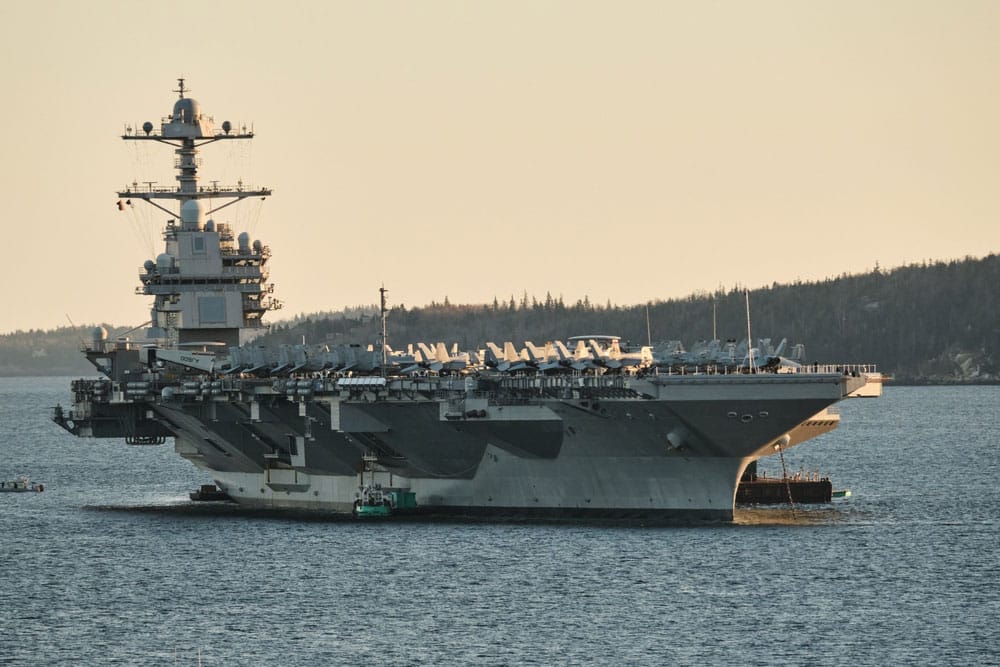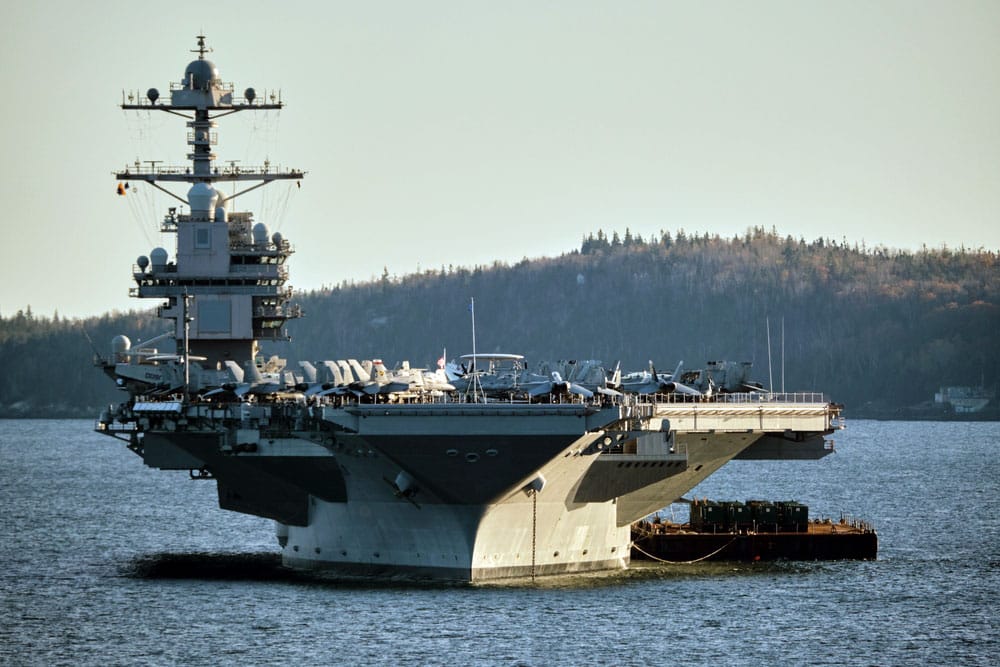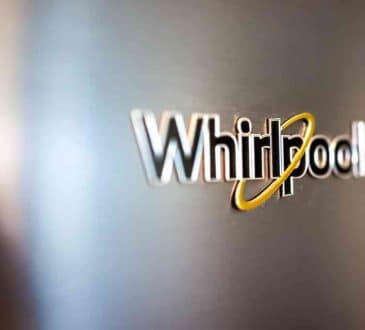These Are The Largest Warships In The World: Military Might And Tech Marvels

Naval and maritime defense requires warships that aren’t only technologically advanced and strategically crucial. In this study by CEOWORLD magazine, we explore the biggest warships across the globe, highlighting their impressive dimensions, formidable capabilities, and significant role in shaping global security.
Join us on a journey to explore the largest and most advanced warships in the world, showcasing cutting-edge technology and military strategy that define modern naval warfare.
It’s worth mentioning that the United States Navy, which has been the leading naval force in the world since the end of World War II, has experienced a change in its standing. According to the source, while the United States still has the most impressive naval fleet in size and power, China has the highest number of ships in total.
In this context, it’s crucial to highlight the significance of American aircraft carriers. The United States possesses the world’s most substantial warships, exemplified by the Nimitz-class carriers, which pay homage to Admiral Chester Nimitz, a key figure in World War II. Launched for the first time in 1975, this class has seen the commissioning of ten carriers, each with impressive dimensions, measuring 1,092 feet in length, displacing 100,000 long tons, reaching a maximum speed of 30 knots, and generating 260,000 shaft horsepower from their engines. These carriers, each costing approximately $9 billion, house a crew of around 6,000.
The United States Navy introduced Gerald R. Ford-class carriers to replace Nimitz-class, aiming for ten in service. These carriers have similar dimensions to their predecessors, with a length of 1,092 feet and comparable displacement. These state-of-the-art carriers cost around $12 billion each and have a crew of approximately 4,000. The first four carriers in this class are named as follows: Gerald R. Ford (commissioned in 2017), John F. Kennedy (prepared for 2024), Enterprise (scheduled for 2028), and Doris Miller (commissioned for 2032).
Nonetheless, it’s crucial to acknowledge that the Navy has encountered challenges during the early stages of constructing the Ford-class carriers. The Congressional Research Service has reported challenges in certifying ship systems, including weapon elevators, propulsion, and electrical systems.
- Ford-class Aircraft Carrier
> Country: United States
> Length (in feet): 1,106
>Additional Information: The United States Navy is constructing the Gerald R. Ford-class nuclear-powered aircraft carriers. They aim to acquire ten of these ships, starting with the lead ship, Gerald R. Ford (CVN-78). It replaces the Enterprise (CVN-65) and later Nimitz-class carriers on a one-for-one basis. - Nimitz-Class Aircraft Carrier
> Country: United States
> Length (in feet): 1,092
>Additional Information: The Nimitz class is a class of ten nuclear-powered aircraft carriers in service with the United States Navy. The lead ship, named after Fleet Admiral Chester W. Nimitz, served as a World War II Pacific Fleet commander and was the last U.S. Navy officer to hold that rank. - Shandong Aircraft Carrier – a variant of Kuznetsov-class aircraft carrier
> Country: China
> Length (in feet): 1,033
>Additional Information: Shandong is a Chinese aircraft carrier that was launched on 26 April 2017 for the People’s Liberation Army Navy (PLAN) of China. It is the country’s first domestically built aircraft carrier and second in PLAN service after the completion and commissioning of Liaoning. The class received the NATO reporting name Kuznetsov Mod. (“modified”). - Liaoning (Type 001 aircraft carrier) – Chinese Completed Kuznetsov-Class Aircraft Carrier
> Country: China
> Length (in feet): 1,005
>Additional Information: Liaoning is the first aircraft carrier commissioned into the People’s Liberation Army Navy Surface Force. Originally laid down in 1985 for the Soviet Navy as the Kuznetsov-class aircraft carrier Riga, she was launched on 4 December 1988 and renamed Varyag in 1990. After the dissolution of the Soviet Union in 1991, construction was halted and the ship was put up for sale by Ukraine. The stripped hulk was purchased in 1998 and towed to the Dalian naval shipyard in northeast China. The ship was rebuilt and commissioned into the People’s Liberation Army Navy (PLAN) as Liaoning on 25 September 2012. Its Chinese ship class designation is Type 001. - Admiral Kuznetsov aircraft carrier
> Country: Russia
> Length (in feet): 999
>Additional Information: Admiral Kuznetsov aircraft carrier (Admiral Flota Sovetskogo Soyuza Kuznetsov) is an aircraft carrier (heavy aircraft cruiser in Russian classification) serving as the flagship of the Russian Navy. The initial name of the ship was Riga; it was launched as Leonid Brezhnev, embarked on sea trials as Tbilisi, and was finally named Admiral Flota Sovetskogo Soyuza Kuznetsov after Admiral of the Fleet of the Soviet Union Nikolay Gerasimovich Kuznetsov. She was initially commissioned in the Soviet Navy and was intended to be the lead ship of the two-ship Admiral Kuznetsov class. The second carrier of this class was eventually sold by Ukraine to China, completed in Dalian, and commissioned as Liaoning. - INS Vikramaditya – Indian-Modified Kiev-Class Carrier
> Country: India
> Length (in feet): 932
>Additional Information: INS Vikramaditya (Translation: Brave as the Sun) is a modified Kiev-class aircraft carrier and the flagship of the Indian Navy. It entered into service in 2013. Originally built as Baku and commissioned in 1987, the carrier served with the Soviet Navy and later with the Russian Navy (as Admiral Gorshkov) before his decommission in 1996. - HMS Queen Elizabeth (R08)
> Country: United Kingdom
> Length (in feet): 932
>Additional Information: HMS Queen Elizabeth is the lead ship of the Queen Elizabeth class of aircraft carriers and the Fleet Flagship of the Royal Navy. Capable of carrying 60 aircraft including fixed-wing, rotary-wing and autonomous vehicles. HMS Queen Elizabeth (R08) will deploy as the central part of a UK Carrier Strike Group with escorts and support ships in order to deliver carrier-enabled power projection. - HMS Prince of Wales (R09)
> Country: United Kingdom
> Length (in feet): 932
>Additional Information: HMS Prince of Wales (R09) is the second Queen Elizabeth-class aircraft carrier of the Royal Navy. Unlike most large aircraft carriers, Prince of Wales is not fitted with catapults and arrestor wires, and is instead designed to operate STOVL aircraft; the ship is currently planned to carry up to 48 F-35B Lightning II stealth multirole fighters and Merlin helicopters for airborne early warning and anti-submarine warfare, although in surge conditions the class is capable of supporting 70+ F-35B. - INS Vikrant
> Country: India
> Length (in feet): 860
>Additional Information: INS Vikrant is an aircraft carrier in service with the Indian Navy. The ship is currently planned to carry up to 26 Rafale M fighters and up to 4 Kamov Ka-31 or 2 HAL Dhruv NUH or 4 MH-60R helicopters. - Charles De Gaulle-Class Aircraft Carrier
> Country: France
> Length (in feet): 858
>Additional Information: Charles de Gaulle is the flagship of the French Navy. The ship, commissioned in 2001, is the tenth French aircraft carrier. It’s also the only nuclear-powered surface vessel completed outside the United States Navy. They named the ship after French President and General Charles de Gaulle. - America-Class Amphibious Assault Ship
> Country: United States
> Length (in feet): 844
>Additional Information: The America-class amphibious assault ships, formerly known as the LHA® class, are intended to put ashore a Marine Expeditionary Unit using helicopters and MV-22B Osprey V/STOLs, supported by AV-8B Harrier or F-35 Lightning II V/STOL fighter planes and various attack helicopters. - Wasp-Class Amphibious Assault ship
> Country: United States
> Length (in feet): 843
>Additional Information: The Wasp class is a class of landing helicopter dock (LHD) amphibious assault ships operated by the United States Navy. Based on the Tarawa class, with modifications to operate more advanced aircraft and landing craft, the Wasp-class is capable of transporting almost the full strength of a United States Marine Corps Marine Expeditionary Unit (MEU) and landing them in hostile territory via landing craft or helicopters as well as providing air support via AV-8B Harrier II attack aircraft or F-35B Lightning II stealth strike-fighters. - Kirov-class Cruiser
> Country: Russia
> Length (in feet): 827
>Additional Information: The Kirov-class cruiser served with both the Soviet and Russian Navies and is nuclear-powered. The lead ship, Kirov, served in the Winter War, World War II, and the Cold War as a Project 26 Kirov-class cruiser. - Izumo-Class Helicopter Destroyer
> Country: Japan
> Length (in feet): 814
>Additional Information: The Izumo-class is a new helicopter carrier for the Japan Maritime Self-Defense Force (JMSDF). The ships of this class will be the largest surface combatants of the JMSDF, taking over the mantle currently held by the Hyūga-class helicopter destroyer.
Therefore, the world’s 14 largest warships represent the pinnacle of naval engineering and military capability. These colossal vessels are essential for national defense and power projection. However, their immense size and firepower also underscore the need for responsible and diplomatic international relations to ensure peace and stability in an increasingly interconnected world. As technology advances, we must use these warships wisely to enhance global security and cooperation at sea.
Have you read?
Ranking: Richest Golfers in the World, 2023.
These Largest Cities Will Face Extreme Climate Change Threats.
These All-American Football Movies Inspired CEOs and Management Consultants The Most.
These Are Most Disliked Companies in America, 2023.
Report: Countries That Attract the Most International Migrants.
Add CEOWORLD magazine to your Google News feed.
Follow CEOWORLD magazine headlines on: Google News, LinkedIn, Twitter, and Facebook.
This report/news/ranking/statistics has been prepared only for general guidance on matters of interest and does not constitute professional advice. You should not act upon the information contained in this publication without obtaining specific professional advice. No representation or warranty (express or implied) is given as to the accuracy or completeness of the information contained in this publication, and, to the extent permitted by law, CEOWORLD magazine does not accept or assume any liability, responsibility or duty of care for any consequences of you or anyone else acting, or refraining to act, in reliance on the information contained in this publication or for any decision based on it.
Copyright 2024 The CEOWORLD magazine. All rights reserved. This material (and any extract from it) must not be copied, redistributed or placed on any website, without CEOWORLD magazine' prior written consent. For media queries, please contact: info@ceoworld.biz
SUBSCRIBE NEWSLETTER









